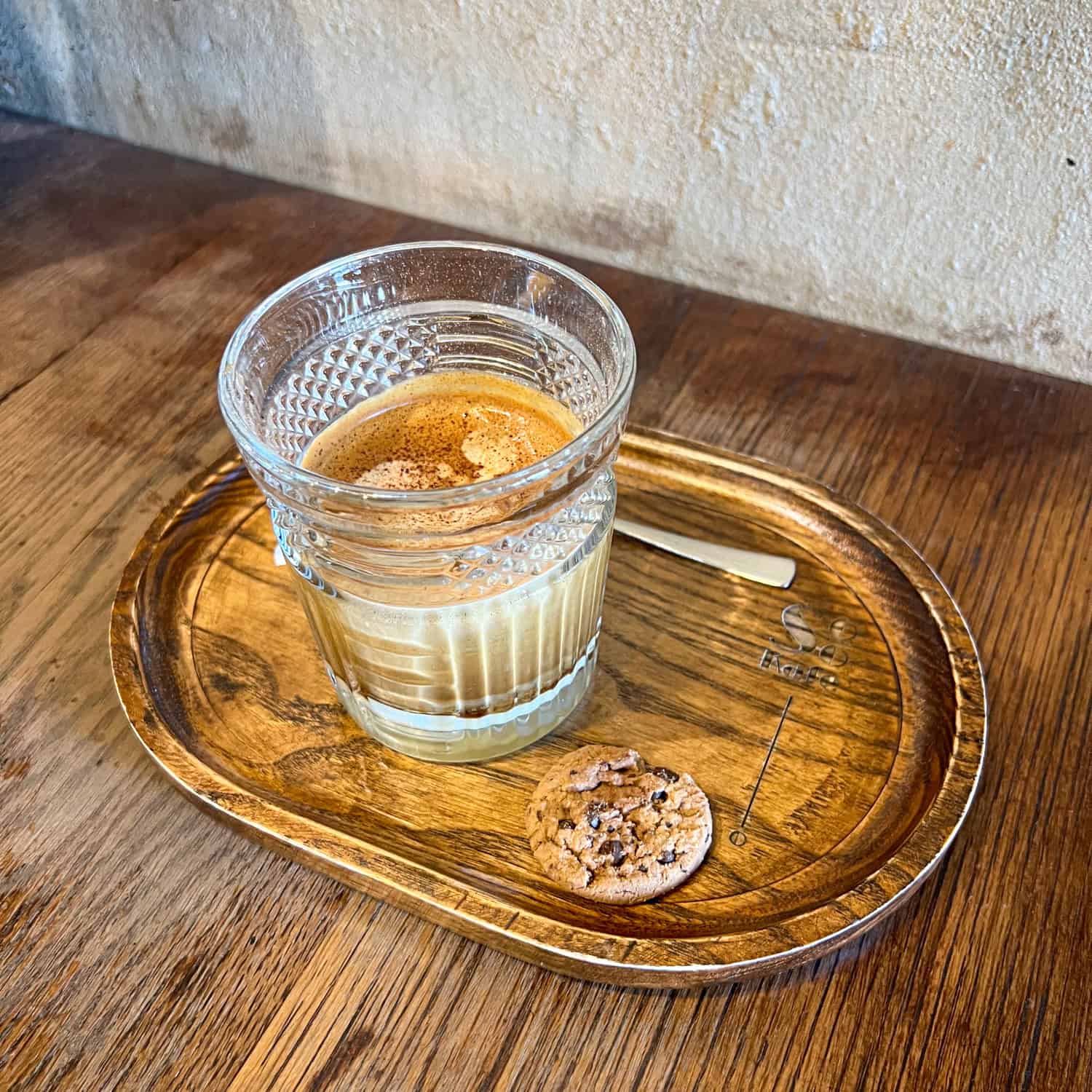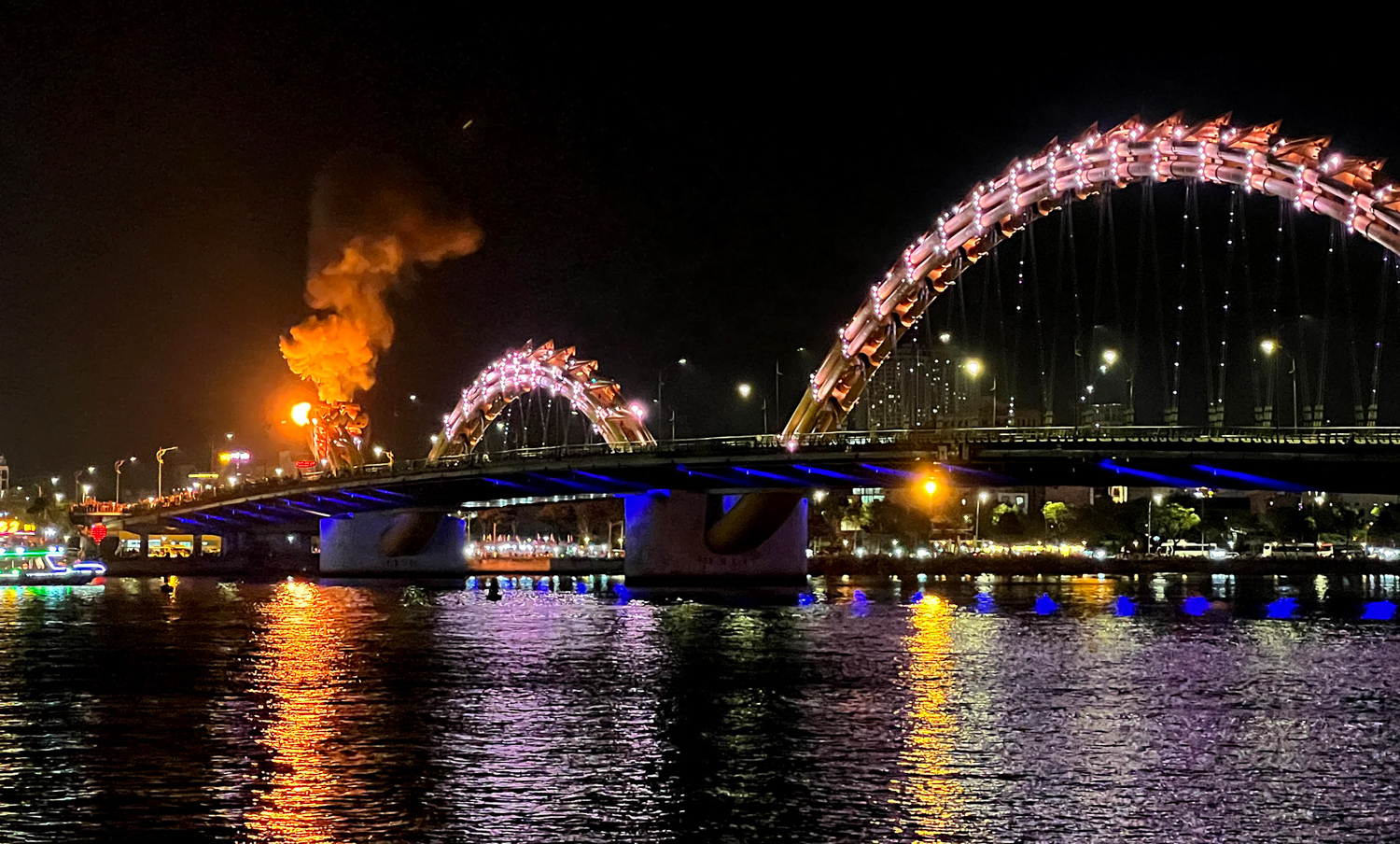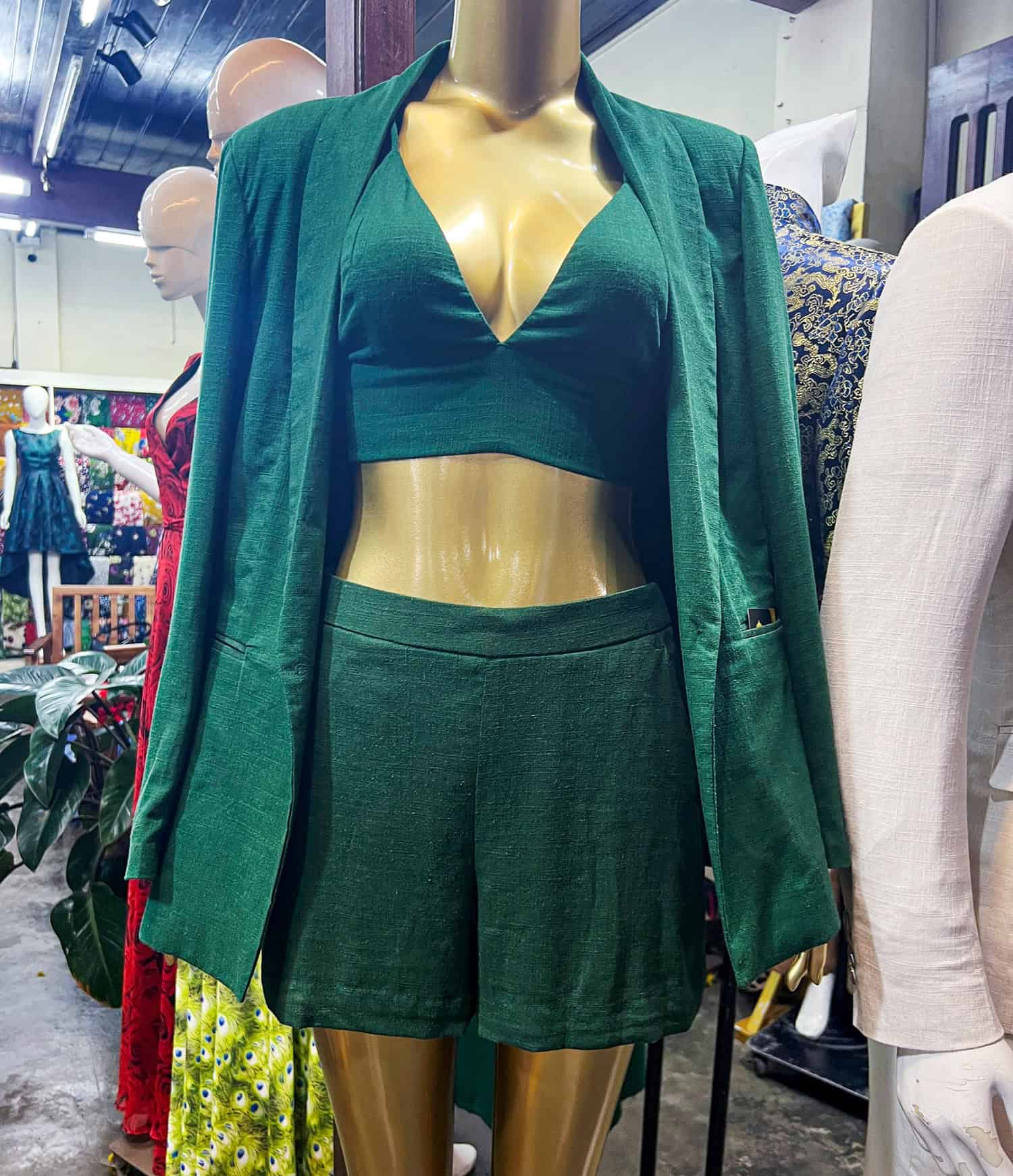Take a break from the big cities and soak up the beauty and charm of Central Vietnam in Southeast Asia. There are plenty of ancient sites to explore, beaches to enjoy, and delectable food to savor. We've collected a dozen essential things to do in Central Vietnam that you won't want to miss.
Table of Contents
- Central Vietnam Attractions
- 1. Savor Vietnamese Coffee
- 2. Wander Buddhist Caves at the Marble Mountains
- 3. Snap Photos on the Iconic Golden Bridge
- 4. Ride a Motorbike Through the Countryside
- 5. Lounge On the Beach
- 6. Taste the Local Cuisine on a Food Tour
- 7. Watch the Dragon Bridge Breathe Fire and Water
- 8. Admire Lady Buddha in Da Nang
- 9. Buy a Custom-Tailored Dress or Suit
- 10. Stroll the Ancient City of Hoi An
- 11. Trek Back in Time at My Son Sanctuary
- 12. Explore the Imperial City of Hue
Central Vietnam Attractions
1. Savor Vietnamese Coffee

Vietnam is a caffeine dream and one of the best places in the world for coffee lovers. The country is the second-largest exporter of coffee, only surpassed by Brazil. It's also trendy inside the country, with coffee shops everywhere.
Vietnam's famous Robusta beans are substantially stronger than Americans are used to, making for a bolder buzz.
The intense, richer flavor means almost twice as much caffeine and the likelihood of something sweet mixed in to counterbalance.
The French introduced Vietnam to coffee in 1857, but the Vietnamese added their own twists to it. Ca phe sua, coffee with milk, is the traditional coffee choice with a healthy dose of sweetened condensed milk.
The thick, sweet liquid transforms the bold, savory coffee into a dark, roasted, buttery flavor. We loved the abundance of condensed milk in Vietnam, delighting in dipping hot, buttery croissants into the gooey decadence.
There are plenty of types of Vietnamese coffee drinks to sip. It's worth trying drip coffee to get the total effect of Vietnamese black coffee without the sweet stuff.
We also recommend salt coffee, which sounds strange but is truly enjoyable.
With the warm temperatures year-round, cold brews are standard options. Blended with coconut milk, coconut coffee is a smoothie with a kick.
Yogurt coffee starts with yogurt in the glass, and black coffee is poured over it.
Created in Hanoi (Northern Vietnam) during the 1940s, egg coffee is a popular choice. The frothy, dessert-like drink is served hot or cold, but we preferred the hot version.
For non-coffee drinkers, egg cocoa is a lovely way to experience the creamy drink.
2. Wander Buddhist Caves at the Marble Mountains

Walk one of Vietnam's most sacred holy sites at Thuy Son Mountain, part of a cluster of five limestone and marble hills known as the Marble Mountains.
The mountains feature caves and tunnels, although only the largest, Mount Thuy, can be visited by tourists.
The mountains are a spiritual place, first used by the Cham people who lived in Vietnam from the 2nd to the 17th century.
Later, Buddhist followers built shrines and temples among the caves and pagodas, and stone gates above ground. Beautifully carved statues adorn the mountain and the caves.
But first, you have to reach them. Guests can trek the 156 stone steps or take the glass elevator for a shorter climbing journey.
The grounds are gorgeous, with luscious greenery, elaborate stone gates, intricate statues, and contemplative pagodas.
The sacred site has a luminous tranquility, thanks to the alluring surroundings, inside and outside the mountain.
The caves are easily walkable, although the steps can be slippery. The six caverns have statues, shrines, and altars for visitors to appreciate and pay their respects. They're fascinating to walk through, especially with natural light streaming in.
Viewpoints at the top provide grand vistas of the coastline, Da Nang City, and the other Marble Mountains.
The mountains are named after the elements of life:
- Kim Son (Mount Metal)
- Moc Son (Mount Plant)
- Thuy Son (Mount Water)
- Hoa Son (Mount Fire)
- Tho Son (Mount Soil)
An active Buddhist site, the mountain is brimming with monks and people on pilgrimages. Tourists can observe but should be respectful. Admission to the mountain is 40,000 VND, about $2.
3. Snap Photos on the Iconic Golden Bridge

One of the hottest tourist spots in Vietnam is the Golden Bridge in Ba Na Hills. The giant weathered hands holding a gleaming golden walkway make for quite an Instagram-worthy post.
Perched at the top of a mountain, the bridge offers spectacular views of the surrounding landscape.
On clear days, visitors can see the East Vietnam Sea. On foggy days, the bridge takes on a mysterious aura with the misty mountain air drifting in and out.
But the bridge is the real draw. The massive hands grasping the golden rails create a stunning bridge that doesn't disappoint.
Millions have visited the Golden Bridge since it opened in 2018. (Yup, that ancient ruin look isn't natural, but it sure is impressive anyway.)
Located in Sun World Ba Na Hills, an easy day trip from Da Nang or Hoi An, visitors must purchase a ticket to the theme park to walk the bridge.
The bridge draws massive foot traffic, so the best time to go is in the early morning. Enjoy the Ba Na Cable Car ride up the mountain and admire the bridge, the best thing there. Skip the amusement park attractions.
4. Ride a Motorbike Through the Countryside

Vietnam is known for its luscious landscapes. Travel through the countryside by renting a motorbike, the preferred mode of transportation.
One popular route is to drive from Hue to Hoi An or Da Nang, soaking up the countryside and coastline.
Admire the hills, rice fields, and villages along the way. Stop and take pictures of the many beautiful places you'll see, including lakes and beaches.
Cross the Hai Van Pass, a winding mountain stretch known for the military bunkers at the pass and its stunning panoramic views of the ocean.
Get Your Guide offers one-day motorbike tours from Hue to Hoi An and adventures through Hai Van Pass.
There are also one-day rides from Dalat, with twisting mountain roads and gorgeous waterfalls, and Sa Pa, where you'll experience local life in two small villages.
A motorbike trek is the perfect way to take in the quieter aspects of Vietnam.
5. Lounge On the Beach

Take a break from the motorbike traffic and enjoy the soothing sounds of waves rolling in. In a country with more than 1,800 miles of sandy shoreline, there are plenty of places to relax, especially in Central Vietnam.
Da Nang is one of those perfect spots, with more than 17 miles of beachfront to stretch out on. My Khe is a stunning beach in Da Nang, with powdery white sand, clear and warm water, and plenty of coconut palms.
Near Hoi An, Cua Dai Beach and An Bang Beach are peaceful coastline spots. Cua Dai sports a gently sloping beach, while An Bang is a long stretch of sandy shoreline.
Both tropical locations feature white, soft sand with clear, blue water and thatched-hut shade. The two locales offer gentle waves and views of the Cham Islands in the distance.
Note there is an expectation to order a cocktail if you lounge in a deckchair. But it's worth it for a chance to sink your toes into the silky sand and soak up the stunning views.
6. Taste the Local Cuisine on a Food Tour

From banh mi to bun cha, Vietnamese cuisine is cheap and delicious. A food tour can introduce you to multiple dishes, especially ones you may not have tried otherwise.
It's also an opportunity to appreciate the local community, putting tourist dollars back in the hands of mom-and-pop shops. Be prepared to sit on a low plastic stool (standard at street food stalls) and savor the flavorful cuisine.
We enjoyed a walking food tour in Saigon (Southern Vietnam) and a motorbike tour in Da Nang city center.
Walking tours allow you to soak up Vietnamese life and take in the local markets. A motorbike tour allows one to visit more districts and sightsee along the way.
Tours usually last three to four hours, including several stops for savory food and delicious drinks. English-speaking guides provide commentary on the food and restaurants, providing insight into traditional Vietnamese cuisine.
A food tour in Central Vietnam can be an incredible cultural experience, providing insights into the local food scene. It's one culinary adventure you won't regret.
7. Watch the Dragon Bridge Breathe Fire and Water

Every weekend, the Dragon Bridge in Da Nang comes to life. Stretching across the Han River, the bridge features a striking bit of architecture—a 9,000-ton steel fire-breathing dragon.
Construction began in 2009 and took four years, with the bridge opening in 2013, providing the fastest gateway between the international airport and the beautiful beaches.
The 2,185-foot-long bridge sports six lanes and a massive metal dragon in the median, a spectacular sight on and off the bridge.
The snake-like dragon features heart-shaped eyes and a blooming lotus flower tail. The yellow color symbolizes power, prosperity, and the future.
At night, the bridge lights up with more than 2,500 LED lights that alternate colors. On Saturday and Sunday nights at 9 p.m., the dragon dramatically breathes fire and spouts water.
Related: Things To Do in Ho Chi Minh City

The bridge shuts down for the shows, so it's essential not to be late. We arrived seconds after the bridge closed and had to watch from the opposite (tail-end) riverbank.
On time-viewers can walk on the bridge below the dragon's head. But beware, you might get showered with water. The dragon spouts H20 between bursts of fire.
Another optimal spot to watch is from along Tran Hung Dao Street, a road underneath the dragon's head.
You can also watch the show from the Han River by taking a nighttime river cruise or culinary tour.
If you want a more panoramic view, try a nearby rooftop bar. You can take in the whole bridge and admire the bright lights from the city and river boats.
8. Admire Lady Buddha in Da Nang

An imposing figure graces the Da Nang landscape. Lady Buddha Da Nang stands at 220 feet, commanding your attention.
The largest Buddha statue in Vietnam, she stands on the grounds of Linh Ung Pagoda, facing out to sea.
The feminine marble statue sits atop a lotus-style temple on high terrain. Additional carved statues and topiaries adorn the outsides of the massive Lady Buddha.
The gleaming white statue has 17 floors, each with altars and different Buddhas. The climb is worth it for the incredible views of the city, mountains, and sea. Her headdress features one final Buddha, six and a half feet tall.
While the right hand expresses the Prithvi mudra, the other holds a bottle of water, “sprinkling the peace to the offshore fishermen,” according to the statue's website.
Lady Buddha is so giant you can easily see her from anywhere in the city, including from the sandy beaches, where she's perched high on the mountain overlooking the water.
The statue and pagoda were built from 2004 to 2010. Admission is free; donations are accepted.
9. Buy a Custom-Tailored Dress or Suit

Come home with a custom dress or suit, thanks to the impeccable tailoring skills in Vietnam.
Fabric and tailor shops can be found on most streets and in marketplaces. Choose your fabric, get measured, and relish that your new outfit will take only a day or two to produce.
You can have almost anything made, from shirts and pants to dresses and suits. The hand-made clothes will be high quality and cost a fraction of what they would in the U.S. or Europe.
Central Vietnam is known for its exceptional textiles, but Hoi An is the cream of the crop for tailor-made designs. The ancient city boasts hundreds of tailors and a 500-year-old reputation for immaculate clothes.
It's helpful to do some research before you go to get a feel for what you want (a double-breasted suit? A floral maxi dress?) and bring pictures with you.
Barter or pay full price, but no matter what, know you're getting an incredible deal.
10. Stroll the Ancient City of Hoi An

It wouldn't be a trip to Central Vietnam without a visit to the ancient city of Hoi An. The old town is popular with tourists for its ancient landmarks, sacred temples, thriving marketplace, and picturesque river.
The city's historic district, Hoi An Ancient Town, is a UNESCO World Heritage Site. A popular trading port from the 15th to 19th centuries, the city features remarkably preserved buildings with a mixture of local and world influences.
The Thu Bon River, yellowed buildings, and lantern-filled streets set the scene for a lovely step back in time.
Restaurants, coffee shops, and bars are abundant, as our street vendors with Vietnamese cuisine. Several buildings have second-story balconies and rooftop bars to capture more of the charming town from a bird's eye view.
As you wander the ancient city, admire the Japanese Covered Bridge. It's an engineering marvel, made entirely of wood and enduring for more than 400 years old. It even has a tiny shrine.
Walk the ornate bridge, capturing several pictures on and off the ancient structure.
In the marketplace, hundreds of vendors line the streets, providing tourists with plenty of quality goods and opportunities to barter.
If you see an outfit you like, buy it immediately. Finding a tailor shop you previously visited can take forever due to all the winding streets.
Thankfully, motorbikes are banned most of the day, although bicycles and cyclos are permitted.
The tourist traffic sometimes makes the old city quite congested, but it's still lovely to wander the energetic marketplace without vehicle noise or exhaust.
At dusk, the city transforms into an even more magical place. Dappled with paper lanterns, pops of bright colors illuminate the town. Along the river, the golden hour sets up the most photogenic moments yet.
As the sky turns shades of orange, red, and purple, boats glide casually down the captivating river, taking tourists on sunset cruises.
The warm sunset hues and colorful lanterns reflect in the water, a shimmering live version of an Impressionist painting.
11. Trek Back in Time at My Son Sanctuary

Take a walk back in time at My Son Sanctuary, a Hindu complex of temples and towers dating back to the 4th century.
Named a UNESCO World Heritage site in 1999, the grounds were the Kingdom of Champa's religious, political, and architectural center. Built over 1,000 years, the temples were dedicated to Hindu deities, especially Shiva.
There are 71 brick monuments, mostly ruins because of damage during World War II and the Vietnam War. But 20 structures are recognizable, thanks to conservation work to preserve the remaining tower temples.
Located about 30 miles west of Hoi An in Central Vietnam, the site is next to the Thu Bon River and surrounded by jungle and mountains.
Traveling by river cruise is one of the easiest and most scenic ways to reach the magnificent site. Arriving early is a smart way to avoid crowds and capture good-looking pictures in the golden morning light.
Admission to the archeological and religious site is 150,000 VND, about $6.50. Travelers wanting a sunrise ticket, transportation to the site, or bundling with a tour package will pay more.
Related: Cruising Ha Long Bay
12. Explore the Imperial City of Hue

Once Vietnam's political, cultural, and religious center, Hue is a fascinating historical city to explore. Serving as the capital of Vietnam from 1802 to 1945, the city was home to the Nguyen Dynasty, the last royal monarchy.
Along the Huong River, also known as the Perfume River, a square fortress housed the Imperial City of Hue. The Imperial City is part of a complex of Hue monuments designated as a UNESCO World Heritage site in 1993.
Thirteen emperors lived within the walled citadel during the dynasty's reign. Few would have access to the royal grounds then, but now visitors can walk there, observing the opulent architecture and natural beauty.
The heritage site is characterized by its square shape, with walls more than 6,500 feet long and a moat surrounding the complex.
The royal family's palaces and government buildings, temples, pavilions, gardens, and statues are inside the stone walls.
Much of the city was damaged after the end of the Nguyen Dynasty and during the Vietnam War. Restoration efforts have helped rebuild some of the citadel and preserved the remaining buildings.
The massive Ngo Mon Gate greets visitors on their arrival, a striking symbol of the Imperial City. What was once used only by royalty now sees more than two million tourists annually.
There are ten elaborate gates, including one on each side of the four walls. The East Bastion, an intricate yellow gate, is another stunning piece of ancient architecture. Admission to the Imperial City is 200,000 VND, about $8.50.
***
We hope you've enjoyed our rundown of essential things to do in Central Vietnam.
This region of the country has much to offer, whether you're looking to explore historical sites, relax at some of the region's best beaches, or delve into the local food.
Planning a trip? Go Backpacking recommends:
- G Adventures for small group tours.
- Hostelworld for booking hostels.
